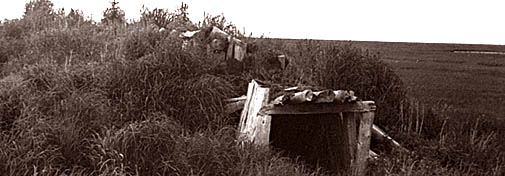| |
Discover 11,000 years of History . . . (con't from homepage)
Cultural resources are both physical manifestations and intangible values that connect us to our past, providing the means to study and reflect upon the events and processes that have shaped our nation, our communities and ourselves. Many are unique and irreplaceable. Their true value rests in what they offer us in terms of scientific information, interpretive opportunities, and cultural identity. Cultural resources managed by the Service are particularly important for the following reasons:
The National Wildlife Refuge System's more than
96 million acres are spread across diverse landscapes throughout
North America, the Pacific Ocean, and Caribbean Sea. These lands
and facilities are located along coasts, rivers, estuaries, and
wetlands – areas that have been used by people for thousands
of years for settlement, transportation and subsistence.
The study of managed cultural resources provides important information
on changes to our environment and landscapes over thousands of years
that contributes directly to the Service's primary mission of managing
wildlife and natural landscapes. Studying archaeological sites helps
us reconstruct and understand changes in vegetation patterns, wildlife
populations, fluctuations in climate, and historic uses of the land
by humans.
Interpreting cultural resources offers excellent opportunities to
help educate millions of refuge visitors each year about how humans
interact with their natural environment and changes to landscapes
over time.
Many cultural resources embody values important to communities and
Indian tribes that are adjacent to refuges and national fish hatcheries.
Given the geographic diversity of refuges and hatcheries in every
state and several territories and possessions, the Service is in
effect protecting and managing sites important for local traditional
and cultural purposes.
The re-use of historic buildings as offices may be economically beneficial in terms of savings in replacement costs. The excellent design and workmanship of many historic buildings also offer certain aesthetic qualities not found in modern buildings.
The preservation and study of museum collections and archives, such as historic records and objects, photographs, refuge narrative reports, and artwork, help us understand the Service's important and changing role over a 130-year period in perpetuating our country's natural legacy.
|
|
|





